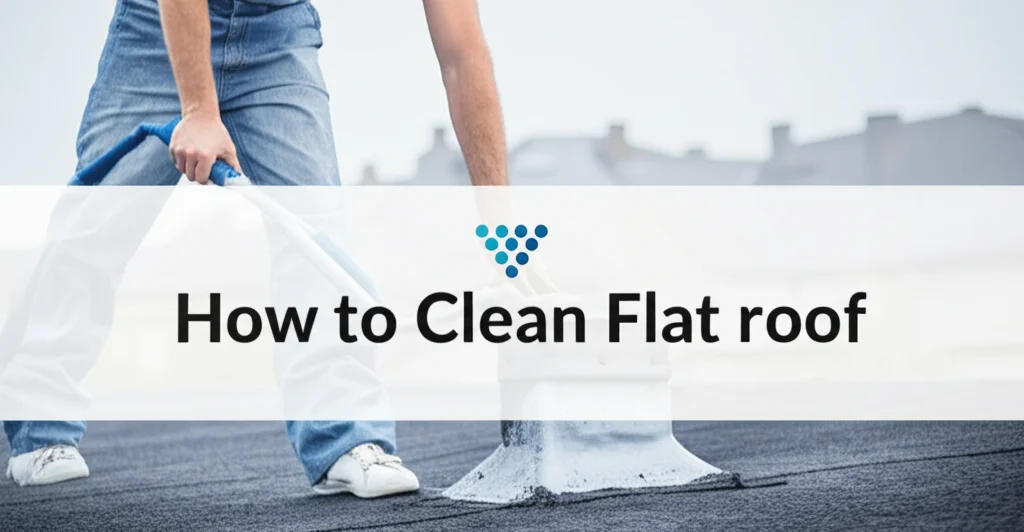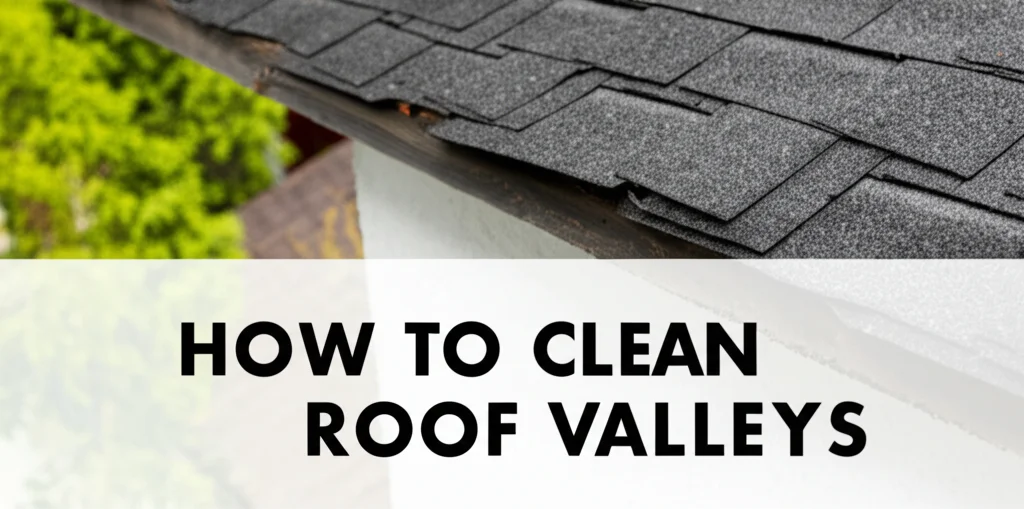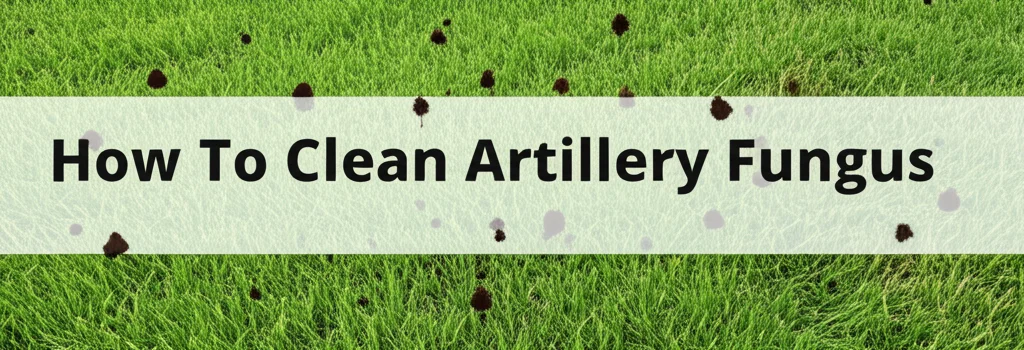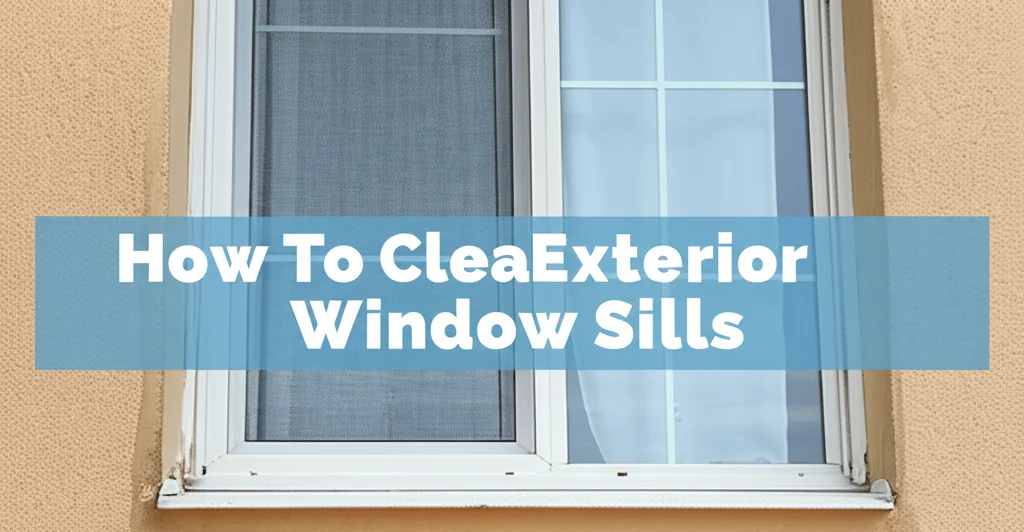· Home Maintenance · 6 min read
how to clean flat roof

How to Clean a Flat Roof: A Step-by-Step Guide
Is your flat roof looking a little worse for wear? Algae, moss, leaves, and debris can quickly accumulate, potentially causing damage and reducing its lifespan. Cleaning a flat roof isn’t as simple as hosing it down, but it’s a manageable DIY project with the right approach. This guide will walk you through everything you need to know about how to clean a flat roof safely and effectively, keeping it in top condition for years to come. We’ll cover the necessary tools, cleaning solutions, safety precautions, and preventative measures.
Quick Answer: To clean a flat roof, safely remove debris with a broom and blower, then gently scrub with a mild detergent and water solution using a soft-bristled brush. Rinse thoroughly, avoiding high-pressure washing, and consider a preventative treatment to inhibit future growth.
Key Takeaways:
- Safety First: Always prioritize safety with proper footwear and fall protection.
- Gentle Cleaning: Avoid harsh chemicals and high-pressure washing to protect the roof membrane.
- Regular Maintenance: Preventative measures are key to keeping your flat roof clean and extending its life.
Why Cleaning Your Flat Roof Matters
A clean flat roof isn’t just about aesthetics; it’s about protecting your investment. Debris accumulation can trap moisture, leading to rot, leaks, and costly repairs. Moss and algae growth can degrade the roofing material over time, shortening its lifespan. Regular cleaning removes these threats, preserving the integrity of your roof and preventing potential problems down the road. Think of it as preventative maintenance – a small effort now can save you significant expenses later.
Assessing Your Flat Roof Material
Before you start cleaning, it’s crucial to identify your roof’s material. Different materials require different cleaning approaches. Common flat roof materials include:
- Modified Bitumen: This is a popular, asphalt-based roofing material. It’s relatively durable but can be sensitive to harsh chemicals.
- EPDM (Ethylene Propylene Diene Monomer): A synthetic rubber roofing known for its flexibility and resistance to weathering. It’s generally easy to clean.
- TPO (Thermoplastic Polyolefin): Another single-ply roofing membrane, known for its energy efficiency and durability.
- PVC (Polyvinyl Chloride): A durable and waterproof roofing option, often used in commercial buildings.
Knowing your roof type will help you choose the appropriate cleaning solutions and methods. Always check the manufacturer’s recommendations for cleaning specific to your roofing material.
Gathering the Right Tools and Supplies
Having the right tools makes the job much easier and safer. Here’s a checklist of what you’ll need:
- Broom: For sweeping away loose debris.
- Leaf Blower: To quickly remove leaves and smaller particles.
- Soft-Bristled Brush: Essential for scrubbing without damaging the roof surface.
- Garden Hose with Adjustable Nozzle: For rinsing. Avoid high-pressure washers.
- Mild Detergent: Dish soap or a specialized roof cleaning solution.
- Bucket: For mixing the cleaning solution.
- Safety Glasses: To protect your eyes.
- Non-Slip Roofing Shoes: Crucial for safe footing.
- Harness and Rope (Optional but Recommended): For added safety, especially on steeper roofs.
- Gloves: To protect your hands from cleaning solutions.
Step-by-Step Guide to Cleaning Your Flat Roof
Now that you have everything you need, let’s get started! Follow these steps for a thorough and safe cleaning:
- Safety First: Wear appropriate footwear and consider a safety harness, especially if your roof has a slight slope.
- Remove Loose Debris: Use a broom and leaf blower to remove leaves, twigs, and other loose debris. This will make the scrubbing process much easier.
- Mix Cleaning Solution: In a bucket, mix a mild detergent (like dish soap) with water. Avoid harsh chemicals like bleach, as they can damage the roofing material.
- Apply Cleaning Solution: Gently apply the cleaning solution to the roof surface using the soft-bristled brush. Work in sections, scrubbing in a circular motion.
- Let it Sit (Briefly): Allow the solution to sit for a few minutes to loosen dirt and grime, but don’t let it dry.
- Rinse Thoroughly: Rinse the roof thoroughly with a garden hose, using a gentle spray nozzle. Avoid high-pressure washing, as it can damage the roof membrane.
- Inspect for Damage: While rinsing, inspect the roof for any signs of damage, such as cracks or blisters. Address any issues promptly.
Preventing Future Growth: Algae and Moss Control
Once your roof is clean, you’ll want to prevent algae and moss from growing back. Here are a few preventative measures:
- Regular Inspections: Inspect your roof regularly for debris accumulation and early signs of growth.
- Trim Overhanging Branches: Trim any overhanging branches that could drop leaves and debris onto the roof.
- Consider a Preventative Treatment: Apply a roof sealant or algaecide specifically designed for your roofing material. These treatments can inhibit growth and extend the life of your roof. You can find more information on roof sealants at https://beacleaner.com/how-to-remove-mold-from-painted-walls/.
- Good Drainage: Ensure proper drainage to prevent water from pooling on the roof.
Safety Precautions for Flat Roof Cleaning
Cleaning a flat roof can be dangerous, so safety should be your top priority. Here are some essential precautions:
- Wear appropriate footwear: Non-slip roofing shoes are a must.
- Use a safety harness: Especially on steeper roofs or if you’re uncomfortable with heights.
- Avoid working in wet or windy conditions: These conditions can make the roof slippery and dangerous.
- Be mindful of electrical wires: Stay away from any electrical wires or equipment on the roof.
- Never use a ladder on an uneven surface: Ensure the ladder is stable and secure before climbing.
- Work with a partner: Having someone to assist you can provide added safety and support. If you’re unsure about any aspect of the cleaning process, consider hiring a professional.
FAQ About Cleaning Flat Roofs
Q: Can I use a pressure washer on my flat roof?
A: No, pressure washers can damage the roofing membrane. The high pressure can cause cracks, blisters, and leaks. Always use a garden hose with a gentle spray nozzle.
Q: What’s the best cleaning solution for a flat roof?
A: A mild detergent, like dish soap, mixed with water is generally the safest and most effective cleaning solution. Avoid harsh chemicals like bleach or ammonia.
Q: How often should I clean my flat roof?
A: It depends on your location and the amount of debris accumulation. Generally, cleaning your flat roof once or twice a year is sufficient.
Q: Is it safe to walk on my flat roof?
A: It depends on the roof’s construction and condition. Always exercise caution and wear appropriate footwear. If you’re unsure, it’s best to avoid walking on the roof altogether. You might want to check out https://beacleaner.com/how-to-clean-floor-grout-without-scrubbing/ for tips on cleaning hard-to-reach areas.
Conclusion: Maintaining a Healthy Flat Roof
Cleaning your flat roof is a vital part of home maintenance. By following these steps and prioritizing safety, you can keep your roof in excellent condition, preventing costly repairs and extending its lifespan. Remember to choose the right cleaning solutions for your roof material, avoid harsh chemicals and high-pressure washing, and implement preventative measures to inhibit future growth. A clean flat roof is a protected flat roof, and a little effort goes a long way. Don’t hesitate to consult a professional if you’re uncomfortable with any aspect of the cleaning process. For other cleaning tips around the house, explore our guide on https://beacleaner.com/how-to-clean-vinyl-plank-flooring/.




